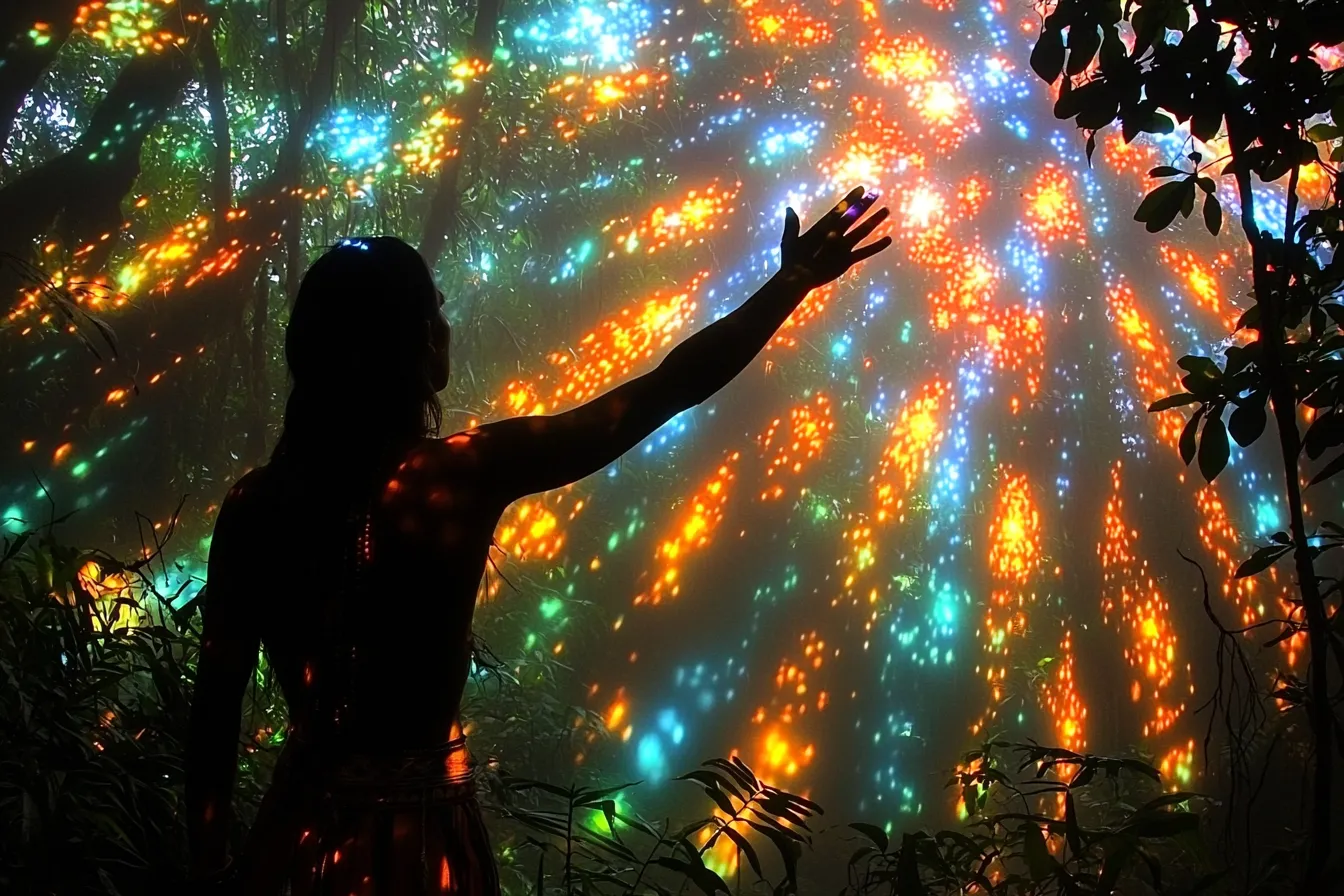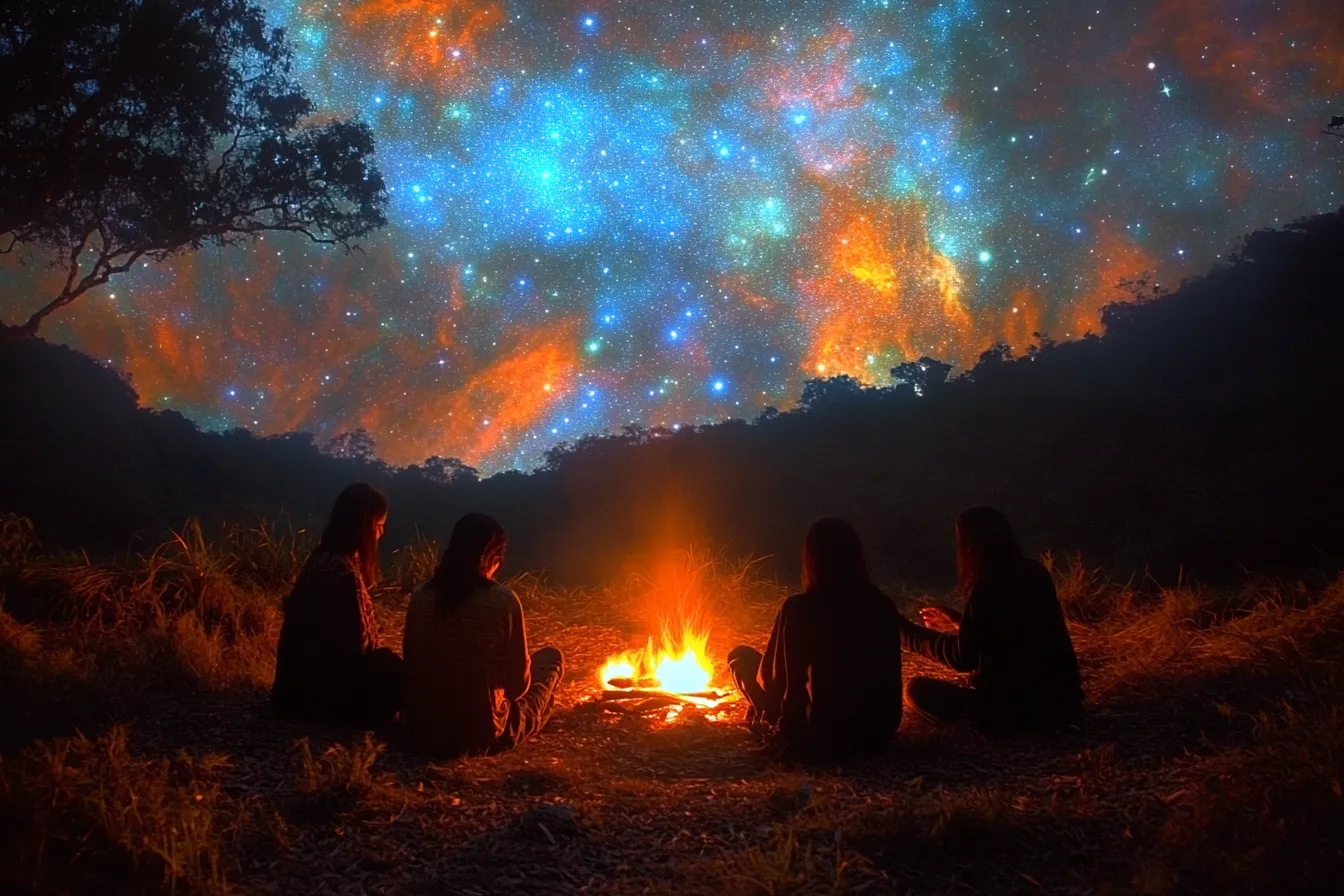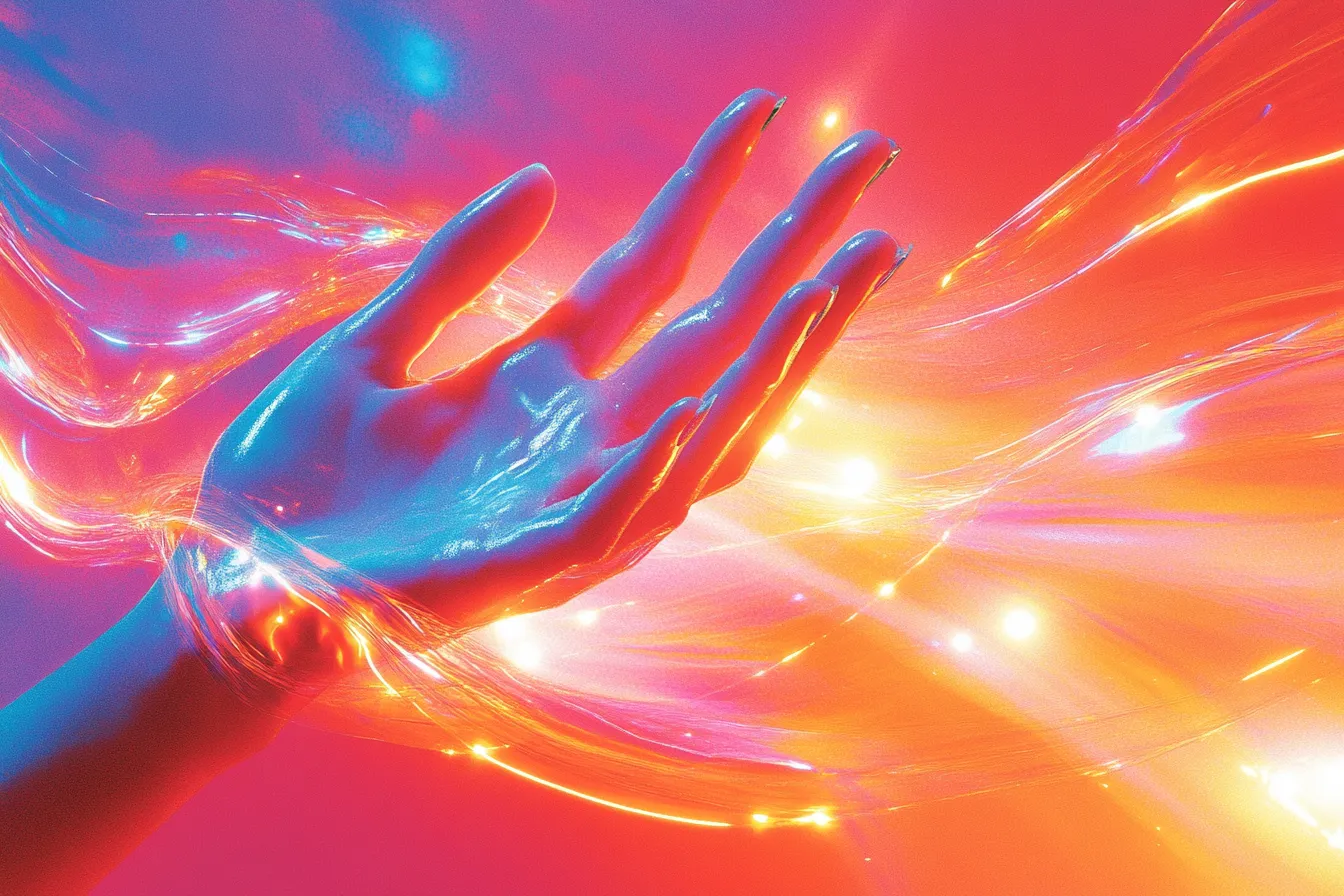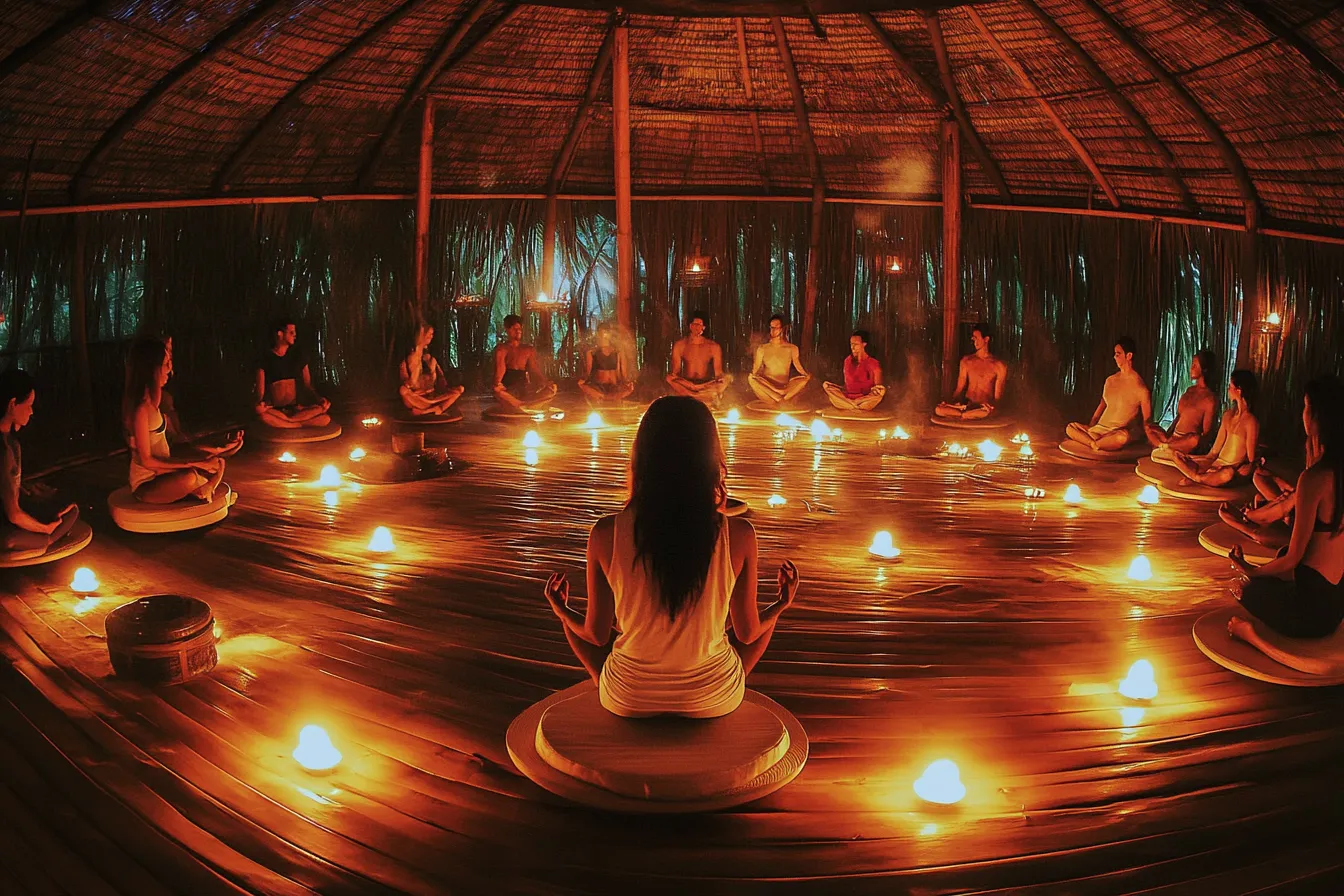In the relentless pursuit of understanding the enigmas of existence, humanity has often ventured down unconventional paths. Among the most intriguing and controversial avenues is the utilization of psychedelics as conduits for spiritual enlightenment. Explorers of “consciousness” have turned to these substances to traverse the furthest reaches of their souls, transcending the limitations of ordinary perception, and sometimes even touching the ineffable realms of the divine.
The exploration of psychedelics for spiritual enlightenment has emerged as a compelling topic, blending ancient traditions with modern scientific inquiry. Across cultures and throughout history, various societies have utilized psychedelics as sacraments in religious rituals, ceremonies, and healing practices. In recent decades, scientific research has begun to investigate the potential of psychedelics to catalyze profound spiritual experiences and foster personal growth.
Psychedelics, such as psilocybin (found in certain species of mushrooms), ayahuasca (a shamanic brew from the Amazon rainforest), and LSD (lysergic acid diethylamide), have garnered attention for their ability to induce non-ordinary states of consciousness characterized by heightened introspection, ego dissolution, and feelings of interconnectedness with all things. These experiences often transcend ordinary perception, opening doorways to profound insights, mystical encounters, and a sense of unity with the cosmos.
Spiritual enlightenment, a concept rooted in various philosophical and religious traditions, refers to a state of profound awakening, inner transformation, and realization of one’s true nature. While the paths to spiritual enlightenment are diverse, psychedelics offer a unique avenue for exploration and expansion of consciousness. In Buddhism, spiritual enlightenment is often described as the profound realization of the impermanence of all things and the cessation of suffering, as expressed in the concept of Nirvana. In Hinduism, it is seen as the ultimate union with the divine, where one experiences the self’s oneness with Brahman, as articulated in the experience of Moksha.
Keep Up with Psychedelic Trends
Don’t miss the latest psychedelic news, events, companies, and more.
We respect and protect your privacy. By subscribing your info will be subject to our privacy policy. Unsubscribe easily at any time
At the heart of mystical experiences lies the dissolution of the ego—a potentially blissful or terrifying phenomenon, involving the loss of one’s sense of separateness and individual identity—which can lead to profound feelings of interconnectedness and unity with all of existence, including the material, the spiritual, and the mystical. This dissolution often brings about a profound shift in perspective, enabling individuals to perceive reality from a broader, more expansive viewpoint. (1)
To see a world in a grain of sand,
and heaven in a wild flower
Hold infinity in the palms of your hand
And eternity in an hour.
It’s also essential, however, to approach the use of psychedelics for spiritual enlightenment with caution and respect. Set and setting play a crucial role in shaping the nature and outcome of psychedelic experiences. A supportive environment, proper preparation, and on-going integration are vital for maximizing the potential benefits and minimizing risks.
Psychedelics for Spirituality & Enlightenment Throughout History

The history of psychedelic use for spiritual enlightenment is a rich tapestry woven across millennia, encompassing diverse cultures and civilizations around the globe. From ancient shamanic practices to contemporary scientific inquiry, psychedelics have played a significant role in humanity’s quest for spiritual understanding, connection, and transcendence.
Ancient civilizations dating back thousands of years, such as the indigenous tribes of the Amazon rainforest, the peoples of Mesoamerica, and the ancient Greeks are known to have used psychedelic substances in religious rituals and ceremonies. Plants like psilocybin mushrooms, peyote, ayahuasca, and ergot (which contains LSD precursor alkaloids) were revered as sacred medicines capable of facilitating communion with the divine, accessing hidden realms, and receiving guidance from ancestral spirits.
In the pre-Columbian Americas, indigenous cultures incorporated psychedelics into elaborate ceremonies and rites of passage. For instance, the Aztecs revered the sacred mushroom teonanácatl (translated as “the flesh of the gods”) as a means to commune with their deities, while the Maya used the visionary cactus peyote to facilitate transdimensional spiritual journeys and healing rituals. (2, 3)
Similarly, ancient civilizations in Asia, such as the Vedic traditions of India, utilized psychedelic plants like soma (whose identity remains debated) to induce non-ordinary states of consciousness and spiritual insight. In ancient Greece, the Eleusinian Mysteries were centered around a psychedelic potion known as the kykeon (“the drink of heroes”), which offered profound experiences of transcendence and enlightenment. (4, 5)
Keep Up with Psychedelic Trends
Don’t miss the latest psychedelic news, events, companies, and more.
We respect and protect your privacy. By subscribing your info will be subject to our privacy policy. Unsubscribe easily at any time
Throughout history, the use of psychedelics for spiritual purposes has waxed and waned, often intersecting with cultural, religious, and political shifts. With the advent of modern science in the 20th century, psychedelics came under scrutiny and legal restrictions, leading to their stigmatization and marginalization from mainstream society.
In recent decades, there has been a resurgence of interest in psychedelics for therapeutic and spiritual purposes. Groundbreaking research, such as the psilocybin studies conducted at institutions like Johns Hopkins University and Imperial College London, has demonstrated the profound potential of psychedelics to induce mystical experiences, foster spiritual growth, and alleviate existential distress, often coinciding with mental health conditions like anxiety in terminally-ill patients, depression, and addiction. (6)
Today, amidst a culture-wide reevaluation of psychedelics, there is growing recognition of their potential to catalyze spiritual enlightenment and personal transformation. From ancient rituals to cutting-edge research, the history of psychedelic use for spiritual enlightenment continues to evolve, offering a fascinating glimpse into humanity’s enduring quest for meaning, connection, and transcendence.
For more detailed information on the history of psychedelic use in world religious traditions, see our Psychedelics and Religion article.
Can Psychedelics Catalyze Spiritual Experiences?

In the 21st century, there is growing evidence to suggest that psychedelics can indeed play a significant role in fostering spirituality and facilitating profound spiritual experiences. This resurgence of interest stems from both scientific research and anecdotal reports, highlighting the potential of psychedelics to catalyze transformative experiences and deepen spiritual insights. One recent study suggests that reductions in problematic drinking may be mediated by such medicine-induced mystical-type experiences. Forty alcohol dependent adults were randomized to either a 52-minute infusion of ketamine or midazolam, which they received on a designated quit-day during the second week of a five-week motivational enhancement therapy regimen. Psychoactive effects were assessed following the infusion, and alcohol use was monitored for the subsequent 3 weeks at each twice-weekly visit. Ketamine led to significantly greater mystical-type effects and a significant reduction in at-risk drinking when compared to the active control. (7)
In addition to scientific research, there is a growing movement of individuals and communities engaging with psychedelics as tools for spiritual exploration and personal development. Psychedelic retreats, ceremonies, and integration circles are becoming increasingly popular world-wide, providing safe and supportive environments for individuals to explore their inner landscapes and connect with something greater than themselves.
It’s important to approach the use of psychedelics for spirituality with caution and respect. Proper preparation, taking into account one’s set and setting, as well as integrating back to life after the journey are essential to maximize the potential benefits while minimizing the risks of psychedelics. Furthermore, legal and ethical considerations surrounding psychedelic use must be carefully navigated to ensure safe and responsible practices.
Overall, while further research and exploration are needed, the 21st century holds great promise for the role of psychedelics in enhancing spirituality and fostering personal growth. As societal attitudes continue to evolve and scientific understanding deepens, psychedelics may increasingly be recognized as valuable tools for facilitating profound spiritual experiences and promoting greater well-being in individuals and communities alike.
Spirituality and Psychedelic Therapy

Integrating spirituality into clinical therapy using psychedelics represents a promising frontier in mental health treatment, blending ancient wisdom with modern therapeutic approaches. Here are several key components for effectively integrating spirituality into a clinical therapy context within a psychedelic-assisted practice.
01
Holistic Approach: Incorporating spirituality into clinical therapy involves embracing a holistic view of the individual, addressing not only biological mechanisms and psychological symptoms but also existential and spiritual concerns. Therapists, chaplains, or other qualified practitioners can guide clients in exploring their spiritual beliefs, values, and existential questions, helping them find meaning and purpose in their lives.
02
Preparation and Set: Prior to psychedelic sessions, therapists work with clients to prepare them mentally, emotionally, and spiritually for the experience. This includes establishing a safe and supportive setting, setting intentions, and exploring existential themes that may arise during the journey. The therapist, at this point, should also get a sense of the client’s religious and spiritual orientation, identifying what level of spirituality is welcome in the session and from which cultural angle.
03
Integration Therapy: Psychedelic integration is a crucial component of psychedelic-assisted treatment, where clients work with therapists to integrate insights and experiences from their psychedelic sessions into their daily lives. This is “translational” work, carrying “fire from the gods” back to our own families, careers, and communities. Therapists help clients make sense of their experiences, identify personal growth opportunities, and integrate spiritual insights into their worldview and behavior.
04
Mindfulness and Contemplative Practices: Integrating mindfulness, meditation, and other contemplative practices into therapy can enhance spiritual awareness and facilitate deeper self-exploration. These practices help clients cultivate presence, develop insight into their inner experiences, and feel into their own divine connection with the nature of reality, including that which meets the eye and that which is beyond the realm of the mundane.
05
Transpersonal Psychology: Drawing from transpersonal psychology, therapists explore the intersection of spirituality and mental health, acknowledging the inherent spiritual dimension of human experience. Transpersonal therapy approaches recognize that spiritual crises and existential dilemmas are integral parts of the healing journey and seek to support clients in navigating these experiences. (8)
06
Ritual and Ceremony: Incorporating ritual and ceremony, which can be rooted in specific religious or spiritual practices or traditions, into psychedelic-assisted therapy can deepen the mystical aspect of the experience and provide a framework for meaning-making and transformation. Therapists may guide clients in creating personalized rituals or participating in traditional ceremonies that honor the sacredness of the psychedelic journey and the culture, background, or spiritual heritage the client comes from.
07
Cultural Sensitivity: Recognizing the cultural and spiritual diversity of clients, therapists approach psychedelic-assisted therapy with cultural sensitivity and humility. They respect clients’ spiritual beliefs and practices, integrating them into the therapeutic process in a way that honors each individual’s unique cultural background and worldview.
By integrating spirituality into clinical therapy using psychedelics, therapists can offer a holistic approach to healing that addresses not only mental health symptoms but also existential and spiritual concerns. This integrative approach has the potential to promote profound personal growth, spiritual awakening, and holistic well-being in a way that transcends “treatment as usual” standards of care.
Which Psychedelics Can Help With Spirituality & Enlightenment?

When considering which psychedelic medicines may be most useful for developing spiritual enlightenment, several factors come into play, including the substance’s pharmacological properties, cultural context, and therapeutic potential. While individual responses vary, certain psychedelics have garnered attention for their capacity to induce profound spiritual experiences and facilitate personal transformation. That said, depending on the individual’s personal experience, spiritual orientation, set and setting, and manner of use, nearly any substance—including psychedelics and beyond—has the potential to be considered an entheogen (a substance that produces a spiritual experience), including wine, cannabis, MDMA, cacao, and so forth.
01
Psilocybin: The main psychoactive compound in “magic mushrooms,” psilocybin has gained recognition for its ability to elicit mystical-type experiences characterized by feelings of unity, interconnectedness, and transcendence. Psilocybin-assisted therapy has shown promise in clinical settings for treating depression, anxiety, and existential distress, while also fostering spiritual insights and personal growth. (9)
02
Ayahuasca: A traditional brew used in Amazonian shamanic ceremonies, ayahuasca contains a combination of psychoactive compounds, including DMT and MAOIs. Indigenous Ayahuasca medicine ceremonies are often described as deeply spiritual experiences, involving purging, introspection, and connection with nature and the divine. Ayahuasca has been associated with profound healing and spiritual insights, making it a potent tool for spiritual exploration and personal transformation. (10)
03
LSD: Lysergic acid diethylamide (LSD) is an ergot-derived synthetic psychedelic compound known for its powerful effects on consciousness. While historically associated with countercultural movements, LSD has been studied in clinical research for its therapeutic potential. LSD-assisted therapy has shown promise in treating conditions such as PTSD and addiction, often leading to experiences of ego dissolution, interconnectedness, and spiritual awakening. (11)
04
DMT: Dimethyltryptamine (DMT) is a naturally occurring psychedelic compound found in plants, animals, and even the human brain. DMT is known for its rapid onset and intense visual and auditory hallucinations, often described as breakthrough experiences or encounters with otherworldly entities. DMT-containing substances like ayahuasca and smoked DMT have been used in traditional and contemporary contexts for spiritual exploration and healing. (12)
05
Ibogaine: Derived from the root bark of the western African iboga plant, ibogaine has gained attention for its potential in treating addiction and facilitating profound introspection and spiritual insights. Ibogaine ceremonies, often conducted in a supportive setting, can lead to deep psychological exploration, emotional healing, and spiritual awakening. (13)
Ultimately, the choice of psychedelic medicine for spiritual connection depends on individual preferences, therapeutic goals, and cultural context. Each psychedelic offers unique opportunities for spiritual exploration and personal growth, highlighting the diverse ways in which these substances can facilitate profound experiences of interconnectedness, transcendence, and spiritual awakening.
Psychedelic Spirituality in Practice

01
Psychedelic-Assisted Therapy: Under the guidance of trained therapists, individuals undergo psychedelic experiences with the intention of exploring their inner landscapes, confronting unresolved issues, and accessing deeper layers of consciousness. These therapy sessions often lead to profound insights, emotional healing, and spiritual awakening. As discussed above, a prepared mindset and a safe setting are cornerstones of successful psychedelic-assisted therapy.
02
Ritual and Ceremony: Incorporating psychedelics into traditional or personalized rituals and ceremonies can provide a structured framework for spiritual exploration and transformation. Rituals may include setting intentions, invoking spiritual guidance, and engaging in practices such as meditation, chanting, movement, prayer, or other sorts of facilitated connection with spirits, ancestors, Gd, or other deities. By participating in sacred ceremonies, individuals can deepen their connection with the divine, commune with nature, and cultivate a sense of reverence and awe.
03
Mindfulness and Contemplative Practices: Integrating psychedelics with mindfulness meditation, contemplative practices, and breathwork can enhance spiritual awareness and facilitate deeper self-exploration. These practices encourage individuals to cultivate presence, observe their thoughts and emotions without judgment, and connect with a deeper sense of inner peace and wisdom. (14)
04
Nature Immersion: Psychedelics can be used in conjunction with nature immersion practices, such as forest bathing, wilderness retreats, expeditions, full or new moon ceremonies, rituals that include natural or plant elements, and more. Nature has long been revered as a source of spiritual inspiration and healing so combining psychedelic experiences with time spent in natural settings can deepen one’s connection with the earth, foster a sense of unity with all living beings, and provide a context for spiritual reflection and renewal.
05
Creative Expression: Engaging in creative activities such as art, music, dance, or writing can serve as powerful vehicles for expressing and integrating psychedelic experiences. Through creative expression, individuals can process and integrate insights gained during psychedelic journeys, tap into their inner creativity, and connect with the transcendent dimensions of the psyche. (15)
By incorporating these practical applications, individuals can embark on a journey of spiritual exploration and self-discovery, unlocking new insights, perspectives, and dimensions of consciousness along the path to spiritual enlightenment.
Psychedelic Research and Recent Clinical Trials

Most recent clinical research on psychedelic medicines has been focused on their use in medical contexts for the treatment of mental health diagnoses, such as psilocybin trials for depression and end-of-life anxiety or MDMA for post-traumatic stress. Studies regarding psychedelics as entheogens for spiritual development and growth have been fewer, but with FDA approval pending in the next few years, it is reasonable to expect the research field to broaden. A few studies have focused on whether mystical experiences correlate with symptom reduction, as with the ketamine study cited above. The recently published work edited by Thomas B. Roberts, PhD, Psychedelics and Spirituality, is an excellent single-volume review of all things psychedelically spiritual, from Walter Pahnke’s famous Good Friday Experiment at Harvard Divinity School in the 1960’s to the influence of entheogens on non-dual consciousness in Asian religious traditions. (16, 17, 18, 19)
Johns Hopkins University also has pending research on Psilocybin and Spiritual Practice, in which 75 healthy volunteers interested in pursuing spiritual practices with psilocybin were assigned to one of five groups that varied in dose, frequency and intensity of support for spiritual practice, as well as number of psilocybin sessions (either two or three sessions), with double-blind dose-change protocols and follow-up measures occurring over six months after the final psilocybin session. A battery of scales would be used to evaluate spiritual/mystical experience, gratitude, forgiveness, religious coping, death attitude, life purpose, life satisfaction, and psychological functioning. (20)
Psychedelics and their role in spirituality are compelling researchers to take a deeper look at the intersection of modern science and ancient, divine wisdom. As research continues to unfold and societal attitudes evolve, psychedelics may offer profound insights into the nature of consciousness, spirituality, and human existence, and how these factors may also impact physical and mental health, inviting individuals on a transformative journey of self-discovery and spiritual awakening.
Sources

1. Letheby C, Gerrans P. Self unbound: ego dissolution in psychedelic experience. Neurosci Conscious. 2017 Jun 30;2017(1):nix016. doi: 10.1093/nc/nix016. PMID: 30042848; PMCID: PMC6007152
2. Schultes, Richard Evans. “Teonanacatl: The Narcotic Mushroom of the Aztecs.” American Anthropologist, vol. 42, no. 3, 1940, pp. 429–43. JSTOR, http://www.jstor.org/stable/663232
3. F.J. Carod-Artal, “Hallucinogenic drugs in pre-Columbian Mesoamerican cultures,” Neurología (English Edition), Volume 30, Issue 1, 2015, pp. 42-49, https://doi.org/10.1016/j.nrleng.2011.07.010
4. A., Ahirrao & A., Patil. (2022). Identity And Understanding of Soma Plant In Perspective of Indian Bioculture And Medicine. International Journal of Scientific Research in Science and Technology. 327-337. 10.32628/IJSRST229250
5. Webster, Peter & Ruck, Carl & Perrine, Daniel. (2000). Mixing the Kykeon. ELEUSIS: Journal of Psychoactive Plants and Compounds. New Series 4
6. Carhart-Harris, Robin & Giribaldi, Bruna & Watts, Rosalind & Baker Jones, Michelle & Murphy-Beiner, Ashleigh & Murphy, Roberta & Martell, Jonny & Blemings, Allan & Erritzoe, David & Nutt, David. (2021). Trial of Psilocybin versus Escitalopram for Depression. New England Journal of Medicine. 384. 1402-1411. 10.1056/NEJMoa2032994
7. Rothberg RL, Azhari N, Haug NA, Dakwar E. Mystical-type experiences occasioned by ketamine mediate its impact on at-risk drinking: Results from a randomized, controlled trial. J Psychopharmacol. 2021 Feb;35(2):150-158. doi: 10.1177/0269881120970879
8. Hartelius, G., Caplan, M., & Rardin, M. A. (2007). Transpersonal psychology: Defining the past, divining the future. The Humanistic Psychologist, 35(2), 135–160. https://doi.org/10.1080/08873260701274017
9. Ziff S, Stern B, Lewis G, Majeed M, Gorantla VR. Analysis of Psilocybin-Assisted Therapy in Medicine: A Narrative Review. Cureus. 2022 Feb 5;14(2):e21944. doi: 10.7759/cureus.21944. PMID: 35273885; PMCID: PMC8901083
10. Gonçalves J, Luís Â, Gallardo E, Duarte AP. A Systematic Review on the Therapeutic Effects of Ayahuasca. Plants (Basel). 2023 Jul 7;12(13):2573. doi: 10.3390/plants12132573. PMID: 37447135; PMCID: PMC10346174
11. Bedford, P., Hauke, D.J., Wang, Z. et al. The effect of lysergic acid diethylamide (LSD) on whole-brain functional and effective connectivity. Neuropsychopharmacol. 48, 1175–1183 (2023). https://doi.org/10.1038/s41386-023-01574-8
12. Timmermann, C., Zeifman, R.J., Erritzoe, D. et al. Effects of DMT on mental health outcomes in healthy volunteers. Sci Rep 14, 3097 (2024). https://doi.org/10.1038/s41598-024-53363-y
13. Davis AK, Barsuglia JP, Windham-Herman AM, Lynch M, Polanco M. Subjective effectiveness of ibogaine treatment for problematic opioid consumption: Short- and long-term outcomes and current psychological functioning. J Psychedelic Stud. 2017 Nov;1(2):65-73. doi: 10.1556/2054.01.2017.009
14. Schutt, W.A., Exline, J.J., Pait, K.C. et al. Psychedelic experiences and long-term spiritual growth: a systematic review. Curr Psychol (2024). https://doi.org/10.1007/s12144-024-06272-2 . 12 July 2024
15. Maud, Kaitlin. (2024). Use Cases for Art Therapy Intervention in Clinical Psychedelic Praxis. 10.6084/m9.figshare.25768866.v1
16. Raison CL, Sanacora G, Woolley J, et al. Single-Dose Psilocybin Treatment for Major Depressive Disorder: A Randomized Clinical Trial. JAMA. 2023;330(9):843–853. doi:10.1001/jama.2023.14530
17. Yu CL, Yang FC, Yang SN, Tseng PT, Stubbs B, Yeh TC, Hsu CW, Li DJ, Liang CS. Psilocybin for End-of-Life Anxiety Symptoms: A Systematic Review and Meta-Analysis. Psychiatry Investig. 2021 Oct;18(10):958-967. doi: 10.30773/pi.2021.0209
18. Mitchell, J.M., Ot’alora G., M., van der Kolk, B. et al. MDMA-assisted therapy for moderate to severe PTSD: a randomized, placebo-controlled phase 3 trial. Nat Med 29, 2473–2480 (2023). https://doi.org/10.1038/s41591-023-02565-4
19. Hartogsohn, Ido. The Meaning-Enhancing Properties of Psychedelics and Their Mediator Role in Psychedelic Therapy, Spirituality, and Creativity. Front. Neurosci., 05 March 2018. Sec. Neuropharmacology 12 (2018). https://doi.org/10.3389/fnins.2018.00129
20. (2024). Clinicaltrials.gov. https://clinicaltrials.gov/study/NCT00802282?cond=Spirituality&intr=Psychedelic&rank=1

 Ben “Doc” Askins
Ben “Doc” Askins






 Sofie Mikhaylova
Sofie Mikhaylova
 Jason Foster
Jason Foster
 Edmund Murphy
Edmund Murphy
 David Connell
David Connell




 Lauren Smith
Lauren Smith


 Nick Hilden
Nick Hilden Sam Woolfe
Sam Woolfe